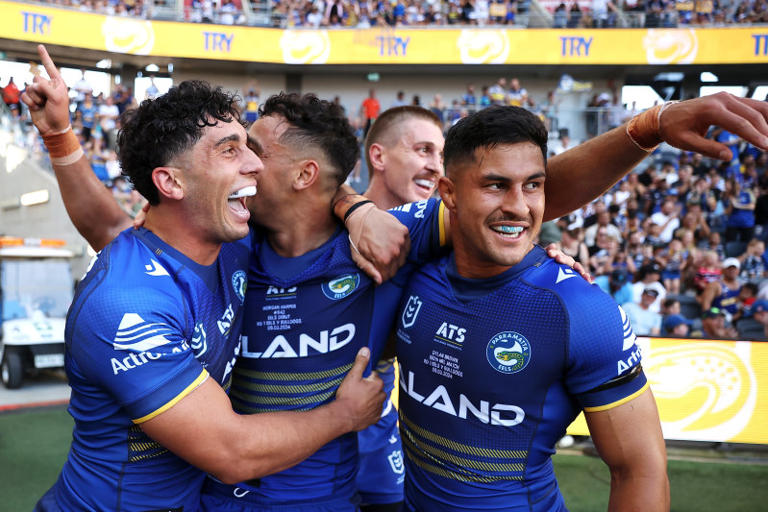The Parramatta Eels are once again in the headlines, but for reasons that go beyond what’s happening on the field. Dylan Brown’s anticipated return to the starting lineup has stirred internal unrest at the club, triggering a fresh wave of discontent that now sees Bailey Simonsson submitting his third release request in less than a month.
For a club already under pressure to produce results and restore a sense of consistency, this latest development throws a wrench into the Eels’ 2025 campaign. While Brown’s on-field capabilities are unquestionable—his creativity, strong defence, and attacking spark make him an asset—the circumstances surrounding his recall have created significant ripples within the dressing room. At the heart of the turmoil is a growing rift between outside back Bailey Simonsson and newly appointed head coach Jason Ryles.
Simonsson, a reliable presence in the backline, has reportedly grown increasingly frustrated with what he perceives as inconsistent communication and lack of clarity around his role in the team. Sources close to the situation suggest that the decision to bring Brown back into the starting side came without proper dialogue or explanation to key players, leaving Simonsson blindsided and unsettled about his own standing within the squad.
It’s the third time in a month that Simonsson has formally requested a release from the club—a clear indication that the tensions are far from minor. For a player to push that hard for an exit in such a short period points to deeper issues between him and the coaching staff, particularly Ryles, whose leadership is reportedly under increasing scrutiny from a faction of the playing group.
Brown’s return, from a purely tactical perspective, makes sense. He’s one of the club’s most dynamic players and has the ability to influence games at crucial moments. But from a man-management point of view, the way the decision has been handled appears to have exposed a crack in the relationship between Ryles and some of his key personnel.
The situation also shines a light on the broader challenges Ryles faces in transitioning from assistant coach to a head coaching role. Known for his tactical acumen and work ethic, Ryles is still relatively new to top-tier coaching and may be grappling with the complexities of managing a large and diverse squad with varying personalities and expectations. Managing egos, expectations, and career aspirations is a delicate balancing act, and in this instance, it appears some wires have been crossed.
The club’s front office now finds itself in a precarious position. Allowing Simonsson to leave could weaken an already fragile backline and send a message that player unrest holds sway. But keeping him against his will might foster deeper resentment and damage team morale. Meanwhile, fans are left to watch the drama unfold, hoping the team can put its internal struggles behind and focus on winning football.
With the season entering a crucial phase, the Eels need unity more than ever. But unless the communication gap between the players and coaching staff is addressed quickly and effectively, Dylan Brown’s recall could end up being the spark that ignites a larger fire within Parramatta’s ranks.
